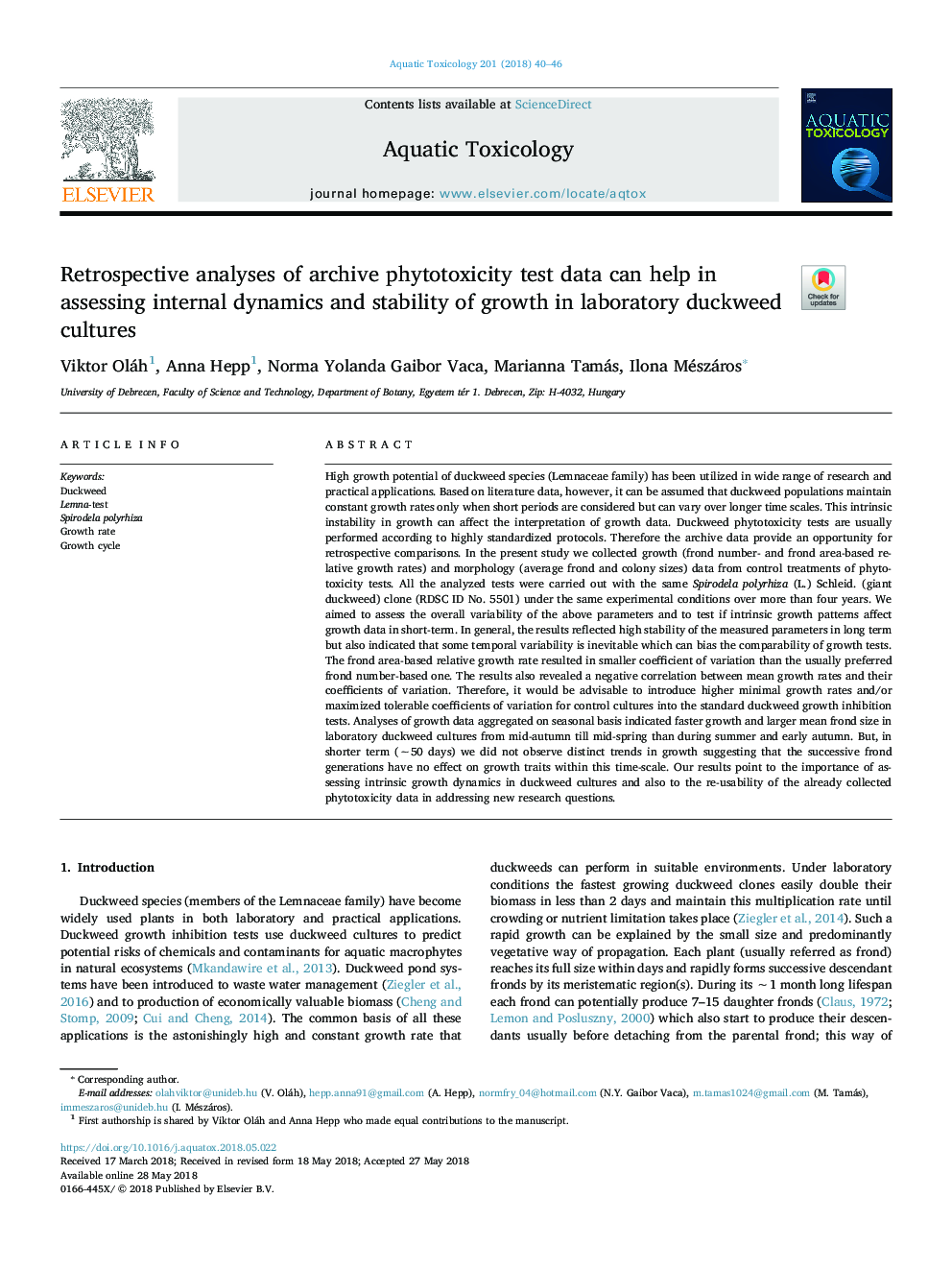| کد مقاله | کد نشریه | سال انتشار | مقاله انگلیسی | نسخه تمام متن |
|---|---|---|---|---|
| 8883664 | 1625904 | 2018 | 7 صفحه PDF | دانلود رایگان |
عنوان انگلیسی مقاله ISI
Retrospective analyses of archive phytotoxicity test data can help in assessing internal dynamics and stability of growth in laboratory duckweed cultures
ترجمه فارسی عنوان
تجزیه و تحلیل مجدد از داده های آزمایشات فیتوتوکسیته بایگانی می تواند در ارزیابی پویایی داخلی و ثبات رشد در کشت های
دانلود مقاله + سفارش ترجمه
دانلود مقاله ISI انگلیسی
رایگان برای ایرانیان
کلمات کلیدی
موضوعات مرتبط
علوم زیستی و بیوفناوری
علوم کشاورزی و بیولوژیک
علوم آبزیان
چکیده انگلیسی
High growth potential of duckweed species (Lemnaceae family) has been utilized in wide range of research and practical applications. Based on literature data, however, it can be assumed that duckweed populations maintain constant growth rates only when short periods are considered but can vary over longer time scales. This intrinsic instability in growth can affect the interpretation of growth data. Duckweed phytotoxicity tests are usually performed according to highly standardized protocols. Therefore the archive data provide an opportunity for retrospective comparisons. In the present study we collected growth (frond number- and frond area-based relative growth rates) and morphology (average frond and colony sizes) data from control treatments of phytotoxicity tests. All the analyzed tests were carried out with the same Spirodela polyrhiza (L.) Schleid. (giant duckweed) clone (RDSC ID No. 5501) under the same experimental conditions over more than four years. We aimed to assess the overall variability of the above parameters and to test if intrinsic growth patterns affect growth data in short-term. In general, the results reflected high stability of the measured parameters in long term but also indicated that some temporal variability is inevitable which can bias the comparability of growth tests. The frond area-based relative growth rate resulted in smaller coefficient of variation than the usually preferred frond number-based one. The results also revealed a negative correlation between mean growth rates and their coefficients of variation. Therefore, it would be advisable to introduce higher minimal growth rates and/or maximized tolerable coefficients of variation for control cultures into the standard duckweed growth inhibition tests. Analyses of growth data aggregated on seasonal basis indicated faster growth and larger mean frond size in laboratory duckweed cultures from mid-autumn till mid-spring than during summer and early autumn. But, in shorter term (â¼50 days) we did not observe distinct trends in growth suggesting that the successive frond generations have no effect on growth traits within this time-scale. Our results point to the importance of assessing intrinsic growth dynamics in duckweed cultures and also to the re-usability of the already collected phytotoxicity data in addressing new research questions.
ناشر
Database: Elsevier - ScienceDirect (ساینس دایرکت)
Journal: Aquatic Toxicology - Volume 201, August 2018, Pages 40-46
Journal: Aquatic Toxicology - Volume 201, August 2018, Pages 40-46
نویسندگان
Viktor Oláh, Anna Hepp, Norma Yolanda Gaibor Vaca, Marianna Tamás, Ilona Mészáros,
